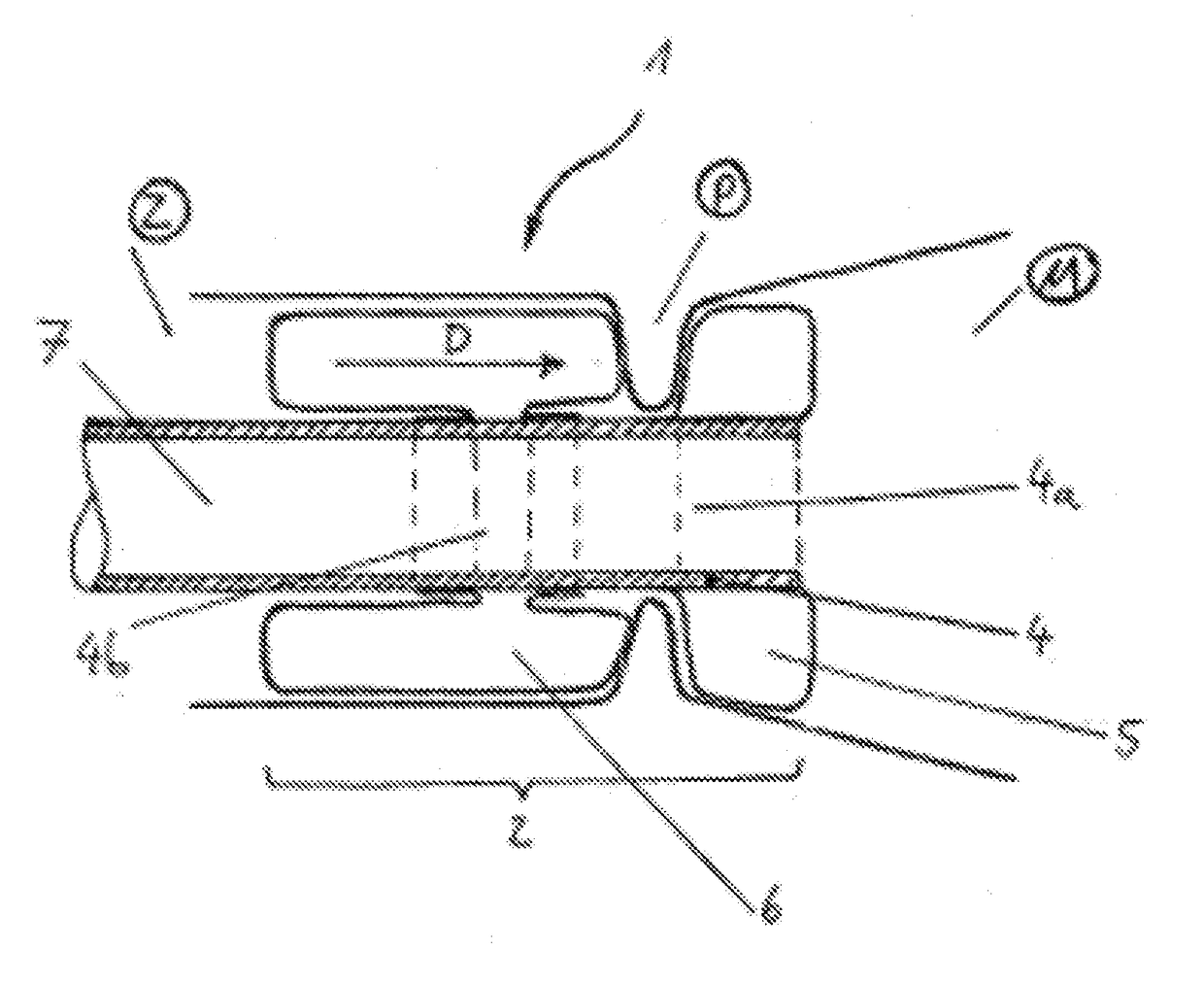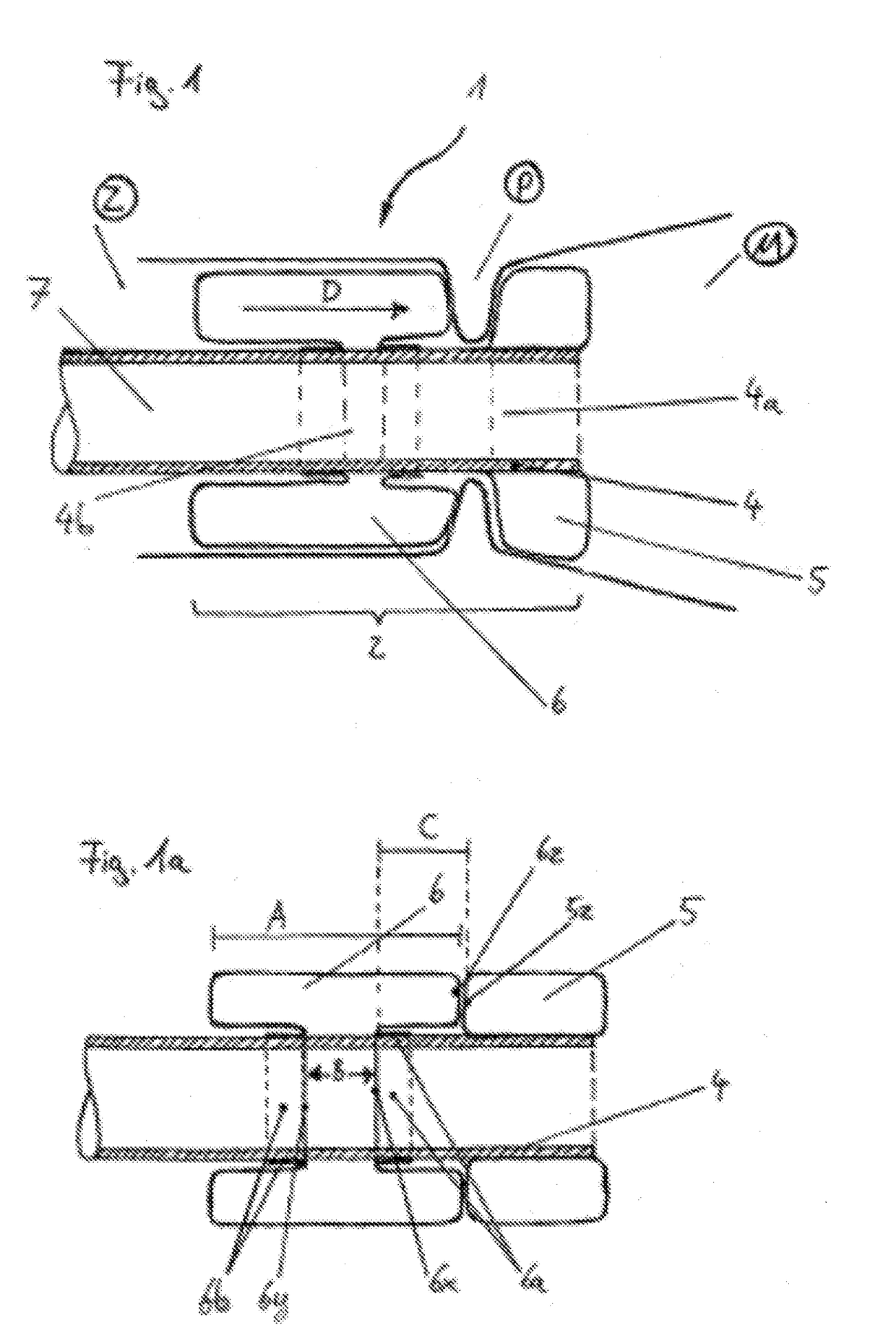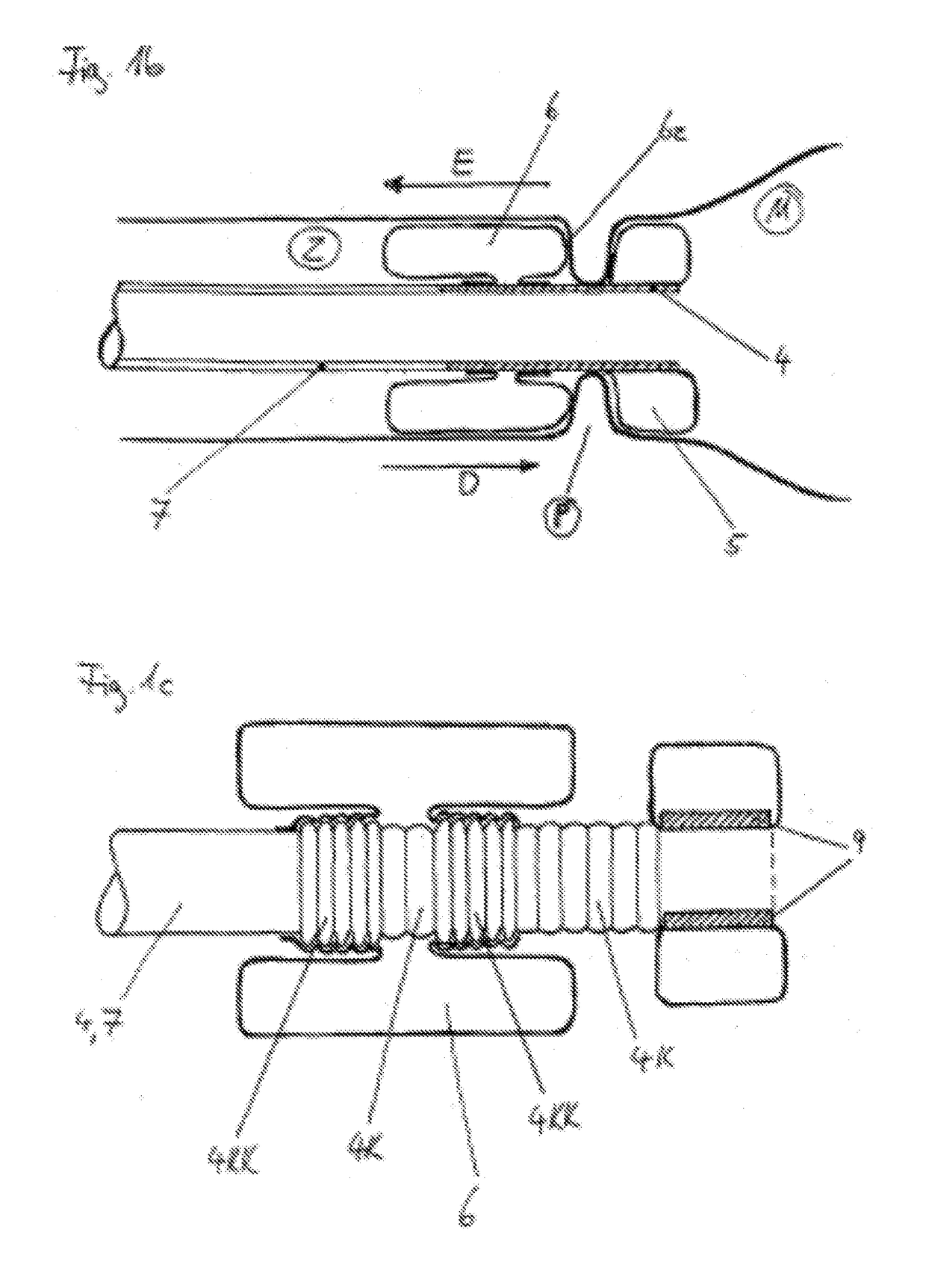Bypass device for the transpyloric conducting of gastric content into or through the duodenum, and applicator for putting same in place
a technology of gastric content and bypass device, which is applied in the field of bypass device, can solve the problems of affecting the quality of life of the affected person, inadequate research on the long-term effects of metabolism, bone stability, tumor development, and substantial treatment costs, and achieves the effect of convenient compression
- Summary
- Abstract
- Description
- Claims
- Application Information
AI Technical Summary
Benefits of technology
Problems solved by technology
Method used
Image
Examples
Embodiment Construction
[0110]FIG. 1 schematically shows a bypass device 1 according to the invention and describes by way of example the required components and structural features for generating a rolling movement D, which is oriented toward the pylorus P, of a fillable balloon element.
[0111]The fixing unit 2 is shown, which is placed beyond the pylorus (transpylorically), of the bypass device, which receives the chyme from the stomach M and conducts it through the pylorus P into the duodenum Z. The unit which fixes the bypass in its transpyloric position has in the center a conducting element 4, which carries an anchoring buttress element 5 on its gastric end 4a and is equipped on its duodenal end 4b with a duodenal balloon element 6, which rolls toward the buttress element in the filled state, is formed in a specific manner, and is fixed on the conducting element. A tube element 7, which conducts the chyme through the duodenum, adjoins the duodenal end 4b of the conducting element.
[0112]FIG. 1a shows t...
PUM
 Login to View More
Login to View More Abstract
Description
Claims
Application Information
 Login to View More
Login to View More - R&D
- Intellectual Property
- Life Sciences
- Materials
- Tech Scout
- Unparalleled Data Quality
- Higher Quality Content
- 60% Fewer Hallucinations
Browse by: Latest US Patents, China's latest patents, Technical Efficacy Thesaurus, Application Domain, Technology Topic, Popular Technical Reports.
© 2025 PatSnap. All rights reserved.Legal|Privacy policy|Modern Slavery Act Transparency Statement|Sitemap|About US| Contact US: help@patsnap.com



